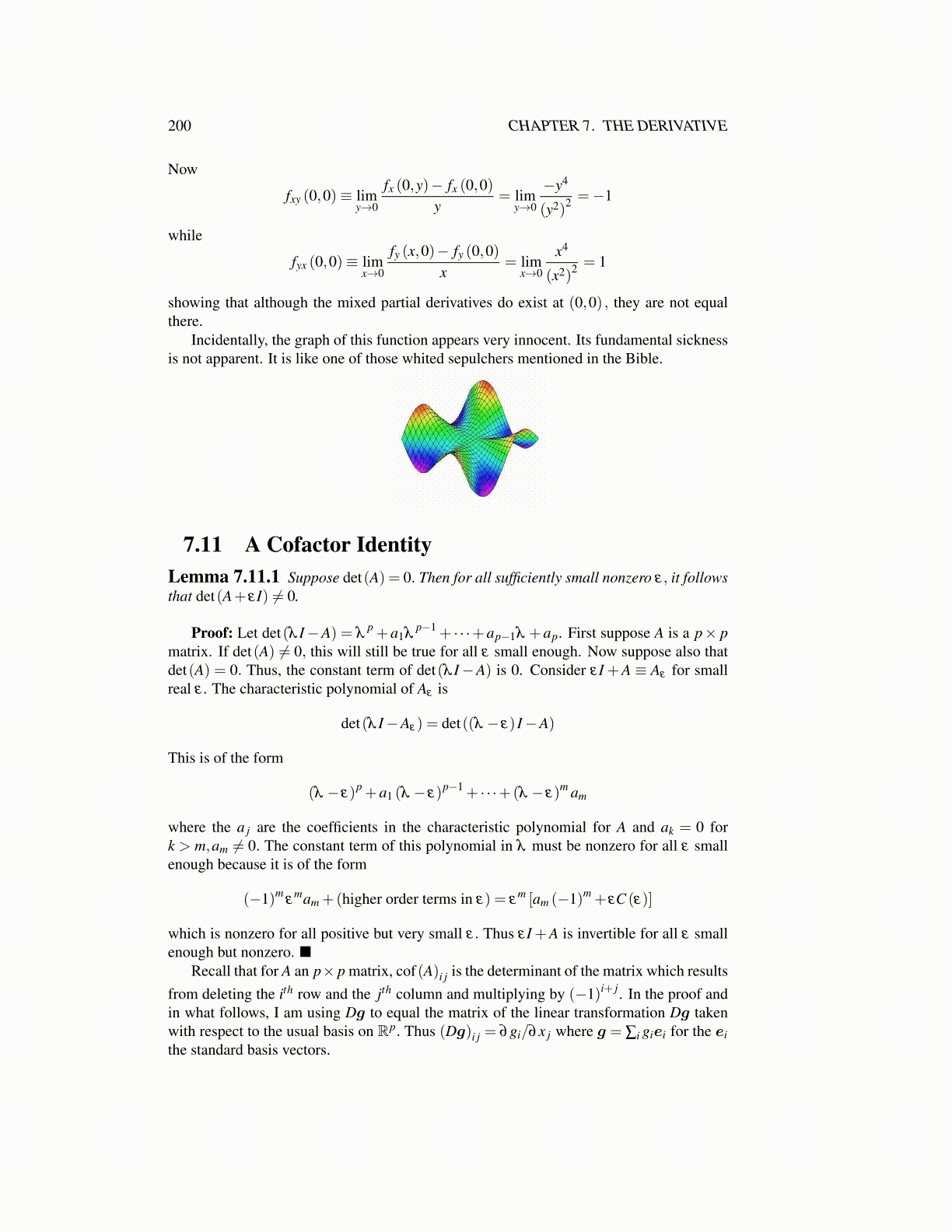
200 CHAPTER 7. THE DERIVATIVE
Now
fxy (0,0)≡ limy→0
fx (0,y)− fx (0,0)y
= limy→0
−y4
(y2)2 =−1
while
fyx (0,0)≡ limx→0
fy (x,0)− fy (0,0)x
= limx→0
x4
(x2)2 = 1
showing that although the mixed partial derivatives do exist at (0,0) , they are not equalthere.
Incidentally, the graph of this function appears very innocent. Its fundamental sicknessis not apparent. It is like one of those whited sepulchers mentioned in the Bible.
7.11 A Cofactor IdentityLemma 7.11.1 Suppose det(A) = 0. Then for all sufficiently small nonzero ε, it followsthat det(A+ εI) ̸= 0.
Proof: Let det(λ I−A) = λp +a1λ
p−1 + · · ·+ap−1λ +ap. First suppose A is a p× pmatrix. If det(A) ̸= 0, this will still be true for all ε small enough. Now suppose also thatdet(A) = 0. Thus, the constant term of det(λ I−A) is 0. Consider εI +A ≡ Aε for smallreal ε . The characteristic polynomial of Aε is
det(λ I−Aε) = det((λ − ε) I−A)
This is of the form
(λ − ε)p +a1 (λ − ε)p−1 + · · ·+(λ − ε)m am
where the a j are the coefficients in the characteristic polynomial for A and ak = 0 fork > m,am ̸= 0. The constant term of this polynomial in λ must be nonzero for all ε smallenough because it is of the form
(−1)mε
mam +(higher order terms in ε) = εm [am (−1)m + εC (ε)]
which is nonzero for all positive but very small ε. Thus εI +A is invertible for all ε smallenough but nonzero. ■
Recall that for A an p× p matrix, cof(A)i j is the determinant of the matrix which resultsfrom deleting the ith row and the jth column and multiplying by (−1)i+ j. In the proof andin what follows, I am using Dg to equal the matrix of the linear transformation Dg takenwith respect to the usual basis on Rp. Thus (Dg)i j = ∂gi/∂x j where g = ∑i giei for the eithe standard basis vectors.